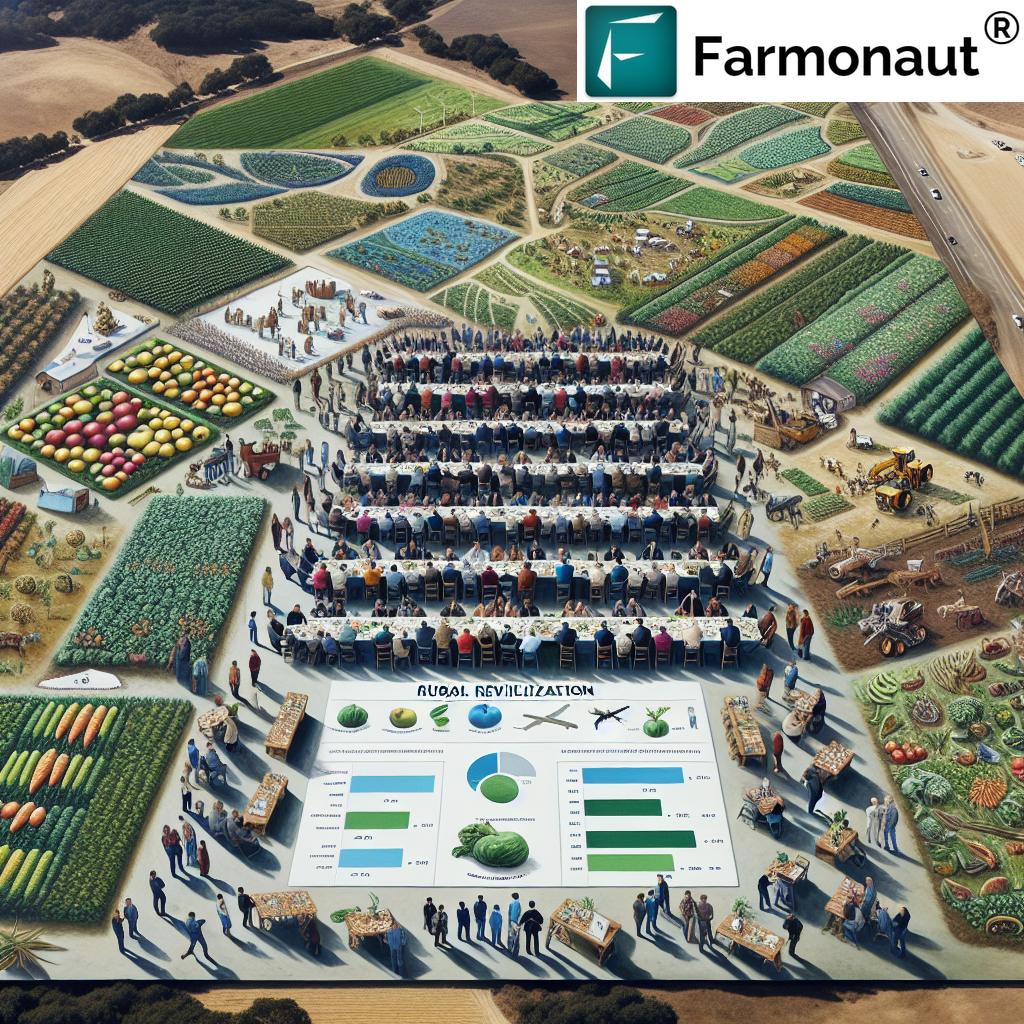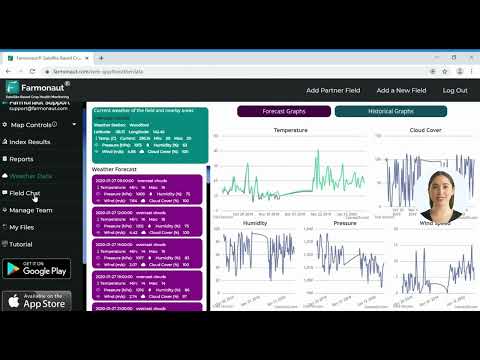Breaking News: New U.S. Agriculture Secretary Confirmed, Faces Rural America Revitalization and Farm Bill Challenges
“The USDA’s $213 billion budget underscores the importance of effective leadership in addressing agricultural challenges in the United States.”
In a landmark development for the U.S. agricultural industry, the Senate has confirmed Brooke Rollins as the 33rd U.S. Secretary of Agriculture. This confirmation comes at a crucial time when rural America faces significant challenges and the need for revitalization is more pressing than ever. As we delve into the implications of this appointment and the road ahead for American agriculture, it’s important to understand the complex landscape that Secretary Rollins will navigate in her new role.

The Confirmation Process and Immediate Challenges
The Senate’s vote of 72-28 in favor of Rollins’ confirmation reflects a strong bipartisan support for her leadership. Following a private swearing-in ceremony at the U.S. Supreme Court building, Secretary Rollins now stands at the helm of the United States Department of Agriculture (USDA), a federal agency with a staggering reach:
- Over 100,000 employees
- 29 agencies under its umbrella
- A $213 billion budget
These numbers underscore the immense responsibility that comes with the role of Agriculture Secretary. As Rollins takes office, she faces a myriad of challenges that demand immediate attention:
| Challenges | Priorities |
|---|---|
| 20% decline in farm income | Farm Bill reauthorization |
| Rising input costs (15% increase) | $50 billion allocation for conservation programs |
| Natural disasters affecting 30% of farmland | Disaster aid distribution |
| 10% reduction in agricultural exports | Expanding trade markets |
| 5% increase in cases of animal disease outbreaks | Strengthening animal health measures |
| 25% of rural population lacking broadband access | Rural infrastructure development |
| 8% decrease in young farmers entering the industry | Support programs for new and young farmers |
As we can see from this table, the new Secretary faces a complex set of issues that require both immediate action and long-term strategic planning. The success of her tenure will largely depend on how effectively she addresses these challenges while implementing the priorities set forth by the administration.
Rollins’ Background and Commitment to Agriculture
Secretary Rollins brings a unique blend of rural roots and policy experience to her new role. Her background includes:
- Early years spent baling hay and raising livestock in Glen Rose, Texas
- Summers working on her family’s farm in Minnesota
- Active participation in 4-H and FFA at all levels
- A Bachelor of Science in agricultural development from Texas A&M University
- Experience as deputy general counsel and policy director for former Texas Governor Rick Perry
- Service as President Trump’s former Director of the U.S. Domestic Policy Council
This diverse experience positions Rollins well to understand the needs of farmers and ranchers across the country. In her statement following the confirmation, she emphasized her commitment:
“Every day, I will fight for American farmers, ranchers, and the agriculture community. Together, we have an historic opportunity to revitalize rural America and to ensure that U.S. Agriculture remains the best in the world for generations to come.”
Key Policy Areas and Challenges
Farm Bill Reauthorization
One of the most pressing issues facing Secretary Rollins is the reauthorization of the Farm Bill. This comprehensive piece of legislation, which typically comes up for renewal every five years, is crucial for setting agricultural and food policy in the United States. The current bill is set to expire, and Rollins will need to work closely with Congress to craft a new version that addresses the evolving needs of the agricultural sector.
Key aspects of the Farm Bill that require attention include:
- Crop insurance programs
- Conservation initiatives
- Nutrition assistance programs like SNAP
- Rural development funding
- Research and innovation support
Balancing the diverse interests of various stakeholders while ensuring the bill provides adequate support for farmers and rural communities will be a significant challenge for the new Secretary.
Disaster Aid and Climate Resilience
With the increasing frequency and severity of natural disasters affecting agricultural regions, disaster aid distribution has become a critical issue. Secretary Rollins has pledged to expedite the distribution of approved disaster aid to farmers affected by events such as droughts, floods, and wildfires.
Additionally, developing long-term strategies for climate resilience in agriculture will be essential. This may include:
- Promoting conservation practices that improve soil health and water retention
- Supporting research into drought-resistant crop varieties
- Implementing advanced weather monitoring and early warning systems
By addressing both immediate relief needs and long-term resilience, Rollins can help ensure the sustainability of American agriculture in the face of climate challenges.
Trade and Market Access
Expanding access to international markets for U.S. agricultural products is a top priority for the new Secretary. With recent trade disputes and changing global dynamics, Rollins will need to work closely with the administration to negotiate favorable trade deals that benefit American farmers and ranchers.
Key focus areas in trade policy may include:
- Reducing tariff and non-tariff barriers for U.S. agricultural exports
- Strengthening relationships with key trading partners
- Addressing unfair trade practices that harm U.S. producers
- Promoting the quality and safety of American agricultural products in global markets
Success in this area could significantly boost farm incomes and help offset challenges faced in domestic markets.
Rural America Revitalization
The revitalization of rural America is a central theme in Secretary Rollins’ agenda. This multifaceted challenge encompasses various aspects of rural life and economy:
Infrastructure Development
Improving rural infrastructure is crucial for economic growth and quality of life in these areas. Key initiatives may include:
- Expanding broadband access to bridge the digital divide
- Upgrading transportation networks to improve market access for agricultural products
- Modernizing water and wastewater systems
- Enhancing healthcare facilities and access in rural areas
Economic Diversification
To create resilient rural economies, Secretary Rollins may focus on:
- Supporting the development of value-added agricultural businesses
- Promoting rural entrepreneurship and small business growth
- Attracting new industries to rural areas through targeted incentives
- Investing in workforce development and education programs
Conservation and Environmental Stewardship
Balancing agricultural productivity with environmental conservation will be a key challenge. Potential areas of focus include:
- Expanding conservation programs that incentivize sustainable farming practices
- Supporting the adoption of precision agriculture technologies to reduce environmental impact
- Promoting renewable energy projects in rural areas
- Addressing water quality and quantity issues in agricultural regions
“The confirmation of the 33rd U.S. Agriculture Secretary marks a pivotal moment for rural America’s revitalization and farm bill reauthorization.”
Technological Innovation in Agriculture
As the agricultural sector continues to evolve, embracing technological innovation will be crucial for maintaining U.S. leadership in global agriculture. Secretary Rollins may prioritize:
- Increasing funding for agricultural research and development
- Promoting the adoption of precision agriculture technologies
- Supporting the development of AI and machine learning applications in farming
- Encouraging the use of data-driven decision-making in agriculture
In this context, companies like Farmonaut are playing a significant role in advancing agricultural technology. Farmonaut offers satellite-based farm management solutions that can help farmers optimize their operations and improve productivity.
Farmonaut’s platform provides valuable services such as real-time crop health monitoring, AI-based advisory systems, and resource management tools. These technologies align well with the USDA’s goals of promoting efficient and sustainable agriculture.
Addressing Labor Challenges in Agriculture
The agricultural sector faces significant labor challenges, particularly regarding immigrant workers. Secretary Rollins has pledged to address these issues, balancing the needs of farmers with broader immigration policies. Key areas of focus may include:
- Reforming and streamlining guest worker programs
- Addressing the status of undocumented farm workers
- Promoting mechanization and automation to reduce labor dependence
- Developing training programs to attract more domestic workers to agriculture
Finding solutions to these labor challenges will be crucial for ensuring the stability and growth of the agricultural sector.
Budget Scrutiny and Efficiency Measures
As with any federal agency, the USDA faces ongoing scrutiny regarding its budget and efficiency. Secretary Rollins will need to navigate these challenges while ensuring that essential programs and services are maintained. Some key areas of focus may include:
- Implementing measures to reduce fraud and waste in USDA programs
- Streamlining administrative processes to improve efficiency
- Leveraging technology to reduce costs and improve service delivery
- Conducting regular audits and performance reviews of USDA agencies and programs
Balancing fiscal responsibility with the need to support and grow the agricultural sector will be an ongoing challenge for the new Secretary.
Collaboration with Other Government Agencies
Many of the challenges facing agriculture intersect with the responsibilities of other government agencies. Secretary Rollins will need to foster strong collaborations to address complex issues effectively. Some key partnerships may include:
- Working with the Environmental Protection Agency on issues related to water quality and pesticide regulations
- Collaborating with the Department of Labor on agricultural workforce issues
- Coordinating with the Department of Commerce on trade-related matters
- Partnering with the Department of Energy on renewable energy initiatives in rural areas
Effective inter-agency cooperation will be crucial for implementing comprehensive solutions to the challenges facing American agriculture.

The Role of Technology in Modern Agriculture
As we look to the future of agriculture under Secretary Rollins’ leadership, it’s clear that technology will play a pivotal role in addressing many of the sector’s challenges. Innovative solutions like those offered by Farmonaut can contribute significantly to the goals of increasing productivity, sustainability, and resilience in American agriculture.
Farmonaut’s satellite-based crop monitoring technology, for instance, aligns well with the USDA’s priorities in several ways:
- Improving resource management and reducing waste
- Enhancing crop yields through data-driven decision making
- Supporting sustainable farming practices
- Providing valuable data for policy-making and program evaluation
By leveraging such technologies, the USDA can better support farmers in adapting to changing climate conditions and market demands.
For developers and businesses looking to integrate agricultural data into their own systems, Farmonaut also offers API access. This can be particularly valuable for agricultural research organizations and agritech companies working on innovative solutions for the sector.
The Path Forward: Challenges and Opportunities
As Secretary Rollins embarks on her tenure, she faces a landscape of both significant challenges and exciting opportunities. The agricultural sector is at a crossroads, grappling with issues such as climate change, shifting global markets, and changing consumer preferences. However, these challenges also present opportunities for innovation, growth, and the revitalization of rural America.
Key areas that will likely define Secretary Rollins’ tenure include:
- Climate Resilience: Developing strategies to help farmers adapt to and mitigate the effects of climate change will be crucial. This may involve promoting conservation practices, investing in research on drought-resistant crops, and supporting the adoption of precision agriculture technologies.
- Trade Relations: Navigating complex international trade dynamics to ensure American farmers have access to global markets will be a top priority. This includes not only negotiating favorable trade deals but also addressing non-tariff barriers and promoting the quality of U.S. agricultural products.
- Rural Development: Revitalizing rural communities through infrastructure investments, economic diversification, and improved access to healthcare and education will be essential for the long-term sustainability of American agriculture.
- Technological Innovation: Embracing and promoting the adoption of cutting-edge technologies in agriculture will be key to maintaining U.S. leadership in the sector. This includes supporting research and development, as well as helping farmers integrate new technologies into their operations.
- Sustainability: Balancing the need for increased agricultural productivity with environmental stewardship will be a significant challenge. This may involve expanding conservation programs, promoting sustainable farming practices, and investing in renewable energy projects in rural areas.
As Secretary Rollins addresses these challenges, she will need to balance the diverse needs of various stakeholders in the agricultural sector, from small family farms to large agribusinesses, while also considering the interests of consumers and environmental groups.
The Role of Data and Analytics in Agricultural Policy
In today’s data-driven world, the importance of accurate and timely information in shaping agricultural policy cannot be overstated. Technologies like those offered by Farmonaut can play a crucial role in providing policymakers with the data they need to make informed decisions.
Satellite-based crop monitoring, for instance, can offer valuable insights into:
- Crop yields and production estimates
- The impact of weather events on agriculture
- The effectiveness of conservation practices
- Land use changes over time
By leveraging such data, the USDA can develop more targeted and effective policies to support farmers and rural communities.
The Future of U.S. Agriculture: A Collaborative Effort
As we look to the future of U.S. agriculture under Secretary Rollins’ leadership, it’s clear that addressing the complex challenges facing the sector will require a collaborative effort. This includes:
- Cooperation between federal, state, and local governments
- Partnerships between the public and private sectors
- Engagement with farmers, ranchers, and rural communities
- Collaboration with research institutions and technology companies
By fostering these partnerships and leveraging the latest technologies and data-driven insights, Secretary Rollins has the opportunity to lead American agriculture into a new era of productivity, sustainability, and prosperity.
Earn With Farmonaut: Affiliate Program
Earn 20% recurring commission with Farmonaut’s affiliate program by sharing your promo code and helping farmers save 10%. Onboard 10 Elite farmers monthly to earn a minimum of $148,000 annually—start now and grow your income!
Conclusion: A Pivotal Moment for American Agriculture
The confirmation of Brooke Rollins as the 33rd U.S. Secretary of Agriculture marks a critical juncture for the American agricultural sector. As she takes the helm of the USDA, Secretary Rollins faces a complex landscape of challenges and opportunities that will shape the future of farming and rural life in America.
From addressing the immediate needs of farmers struggling with low commodity prices and high input costs to developing long-term strategies for climate resilience and rural revitalization, the tasks ahead are formidable. However, with her unique blend of rural roots and policy experience, Secretary Rollins is well-positioned to lead the USDA in tackling these challenges.
As we move forward, the success of American agriculture will depend on a combination of factors:
- Effective policy-making and implementation
- Adoption of innovative technologies and practices
- Collaboration between government, industry, and academic institutions
- The resilience and adaptability of American farmers and ranchers
By embracing these elements and leveraging the latest advancements in agricultural technology, such as those offered by companies like Farmonaut, the U.S. agricultural sector can overcome its current challenges and emerge stronger, more sustainable, and better prepared for the future.
As stakeholders in the agricultural community, it’s crucial that we stay informed about these developments and engage in the ongoing dialogue about the future of farming in America. Whether you’re a farmer, a policy-maker, or simply a concerned citizen, your voice and involvement can help shape the path forward for U.S. agriculture.
FAQ Section
1. What are the main challenges facing the new U.S. Secretary of Agriculture?
The main challenges include addressing low commodity prices, high input costs, natural disasters, trade issues, rural revitalization, and farm bill reauthorization.
2. How does the USDA budget compare to other federal agencies?
With a $213 billion budget, the USDA is one of the largest federal agencies, reflecting the importance of agriculture to the U.S. economy and society.
3. What is the Farm Bill, and why is it important?
The Farm Bill is a comprehensive piece of legislation that sets U.S. agricultural and food policy. It covers areas such as crop insurance, conservation programs, and nutrition assistance.
4. How might technological innovation impact U.S. agriculture in the coming years?
Technological innovations like precision agriculture, AI-driven advisory systems, and satellite-based monitoring can help improve productivity, sustainability, and resilience in the agricultural sector.
5. What role does the USDA play in rural development?
The USDA is responsible for various rural development initiatives, including infrastructure improvements, economic diversification programs, and access to services like healthcare and broadband internet.







